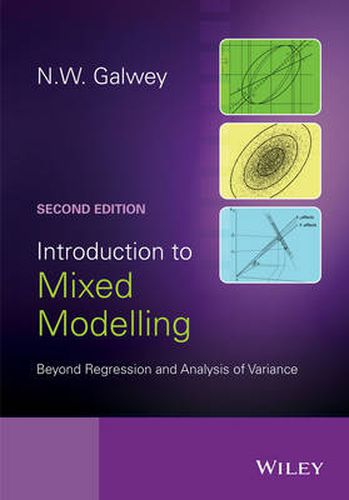Readings Newsletter
Become a Readings Member to make your shopping experience even easier.
Sign in or sign up for free!
You’re not far away from qualifying for FREE standard shipping within Australia
You’ve qualified for FREE standard shipping within Australia
The cart is loading…






Mixed modelling is very useful, and easier than you think!
Mixed modelling is now well established as a powerful approach to statistical data analysis. It is based on the recognition of random-effect terms in statistical models, leading to inferences and estimates that have much wider applicability and are more realistic than those otherwise obtained.
Introduction to Mixed Modelling leads the reader into mixed modelling as a natural extension of two more familiar methods, regression analysis and analysis of variance. It provides practical guidance combined with a clear explanation of the underlying concepts.
Like the first edition, this new edition shows diverse applications of mixed models, provides guidance on the identification of random-effect terms, and explains how to obtain and interpret best linear unbiased predictors (BLUPs).
It also introduces several important new topics, including the following:
Use of the software SAS, in addition to GenStat and R. Meta-analysis and the multiple testing problem. The Bayesian interpretation of mixed models.
Including numerous practical exercises with solutions, this book provides an ideal introduction to mixed modelling for final year undergraduate students, postgraduate students and professional researchers. It will appeal to readers from a wide range of scientific disciplines including statistics, biology, bioinformatics, medicine, agriculture, engineering, economics, archaeology and geography.
Praise for the first edition:
One of the main strengths of the text is the bridge it provides between traditional analysis of variance and regression models and the more recently developed class of mixed models…Each chapter is well-motivated by at least one carefully chosen example…demonstrating the broad applicability of mixed models in many different disciplines…most readers will likely learn something new, and those previously unfamiliar with mixed models will obtain a solid foundation on this topic. -Kerrie Nelson University of South Carolina, in American Statistician, 2007
$9.00 standard shipping within Australia
FREE standard shipping within Australia for orders over $100.00
Express & International shipping calculated at checkout
Mixed modelling is very useful, and easier than you think!
Mixed modelling is now well established as a powerful approach to statistical data analysis. It is based on the recognition of random-effect terms in statistical models, leading to inferences and estimates that have much wider applicability and are more realistic than those otherwise obtained.
Introduction to Mixed Modelling leads the reader into mixed modelling as a natural extension of two more familiar methods, regression analysis and analysis of variance. It provides practical guidance combined with a clear explanation of the underlying concepts.
Like the first edition, this new edition shows diverse applications of mixed models, provides guidance on the identification of random-effect terms, and explains how to obtain and interpret best linear unbiased predictors (BLUPs).
It also introduces several important new topics, including the following:
Use of the software SAS, in addition to GenStat and R. Meta-analysis and the multiple testing problem. The Bayesian interpretation of mixed models.
Including numerous practical exercises with solutions, this book provides an ideal introduction to mixed modelling for final year undergraduate students, postgraduate students and professional researchers. It will appeal to readers from a wide range of scientific disciplines including statistics, biology, bioinformatics, medicine, agriculture, engineering, economics, archaeology and geography.
Praise for the first edition:
One of the main strengths of the text is the bridge it provides between traditional analysis of variance and regression models and the more recently developed class of mixed models…Each chapter is well-motivated by at least one carefully chosen example…demonstrating the broad applicability of mixed models in many different disciplines…most readers will likely learn something new, and those previously unfamiliar with mixed models will obtain a solid foundation on this topic. -Kerrie Nelson University of South Carolina, in American Statistician, 2007